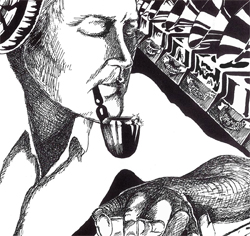From the November/December 1971 issue of the late, great Recording Engineer/Producer (RE/P) magazine, this feature is an in depth look back at the career of a legendary engineer.
When a child is learning to walk, he is able to do no more than put one foot in front of the other and shift his weight.
He learns quickly (after a couple of falls), that he must master these basics before he can advance to running, skipping, or dancing.
His thoughts may not be quite so complex as we seem to imply, but the fact remains that for the time, he can only do one thing, and that without much skill: he can walk.
After several years, he becomes adept to any number of methods of getting himself from place to place.
He may walk, skip, run, dance, or whatever. It all depends on the situation he finds himself in. Further, if he’s been aware of his learning process, he knows he’s gotten beyond his walking stage by experimenting, by playing around with his balance and coordination.
Great dancers are great experimenters. They’ve discovered that they have to go beyond just walking in order to fully express themselves, and to respond artfully to the music to which they dance.
We think the analogy is not too strained when we compare the artistry of a great dancer to the artistry of a great recording engineer.
Such an engineer is beyond the elementary repetition of, “It worked then, and it’ll work now. Why take chances?”, just as the dancer is beyond carefully putting one foot in front of the other and merely walking.
The techniques of the engineer and dancer are always growing, changing, expanding, in order to better express the music and feeling they deal with daily.
Roy Halee dances with his fingers. For his artistry and technique as an engineer, he was awarded a Grammy and the title Engineer of the Year for 1971 by the National Association of Recording Arts and Sciences.
He is the man-behind-the-scenes, engineer, friend, and cohort of Simon and Garfunkel. The classic album “Bridge Over Troubled Water” is the product of his engineering skill combined with the musical genius of Paul Simon and Art Garfunkel. A quick listen to the album will show that its greatness is not music alone.
Columbia has been giving out gold records for only two years, but Halee already has 16 years of them.
His association with Simon and Garfunkel began just as he graduated from Columbia’s editing room to the studio. He was starting as a recording engineer when Simon and Garfunkel arrived for their first audition.
He engineered, they played, and that first audition became their first album, “Wednesday Morning, 3 A.M.” He’s been with them ever since.
Just as the dancer must obey the law of gravity, there are certain limits that Halee must work within. But those limits are becoming frayed and dented by his insistent forays against them.
Halee says it succinctly: “I don’t like to make hard and fast rules. When experimentation goes out the window, new sounds go out the window.”
It’s hard to pin the man down on exact and repeat- able techniques; he’s always changing. We managed however, to get some insight on him, and the contribution he’s made to engineering artistry.
It is well known that Halee gets tasteful though unusual sounds from his drums.
He normally mikes them with a U-47 overall, snare top and bottom with a salt shaker or RE-20, floor torn often top and bottom, a mike over the sock cymbal (high hat), high enough to get some splash from the snare, and the bass drum front and back.
The second mike on the snare allows him to get a bit of crack without over eq’ing, a technique that is especially effective on the louder rock dates. Double miking of the other drums allows similar effects to be employed.
Phasing seems generally not to be a problem, but readers are cautioned when employing such a technique to be certain that any double miking done is constructive, both electrically and acoustically. Halee is unhappy with copying for the sake of copying. As he puts it:















